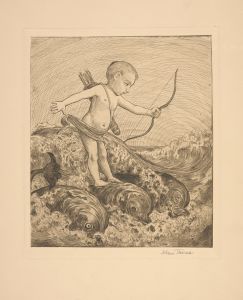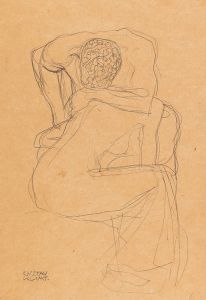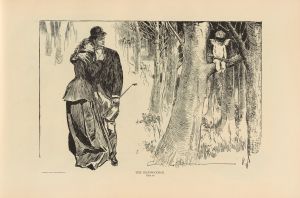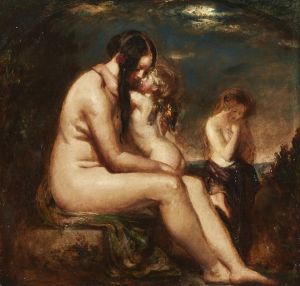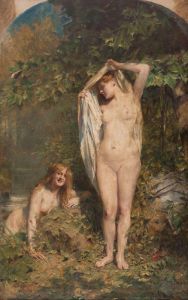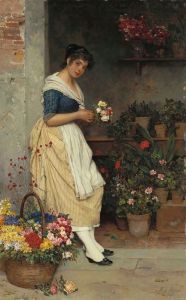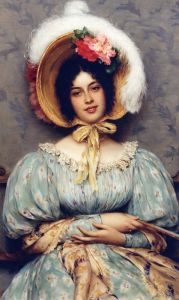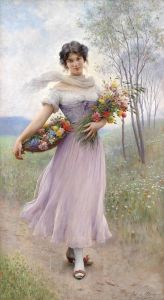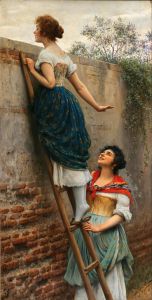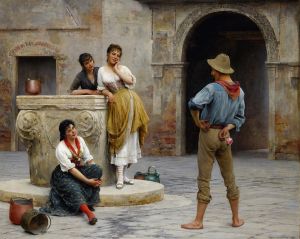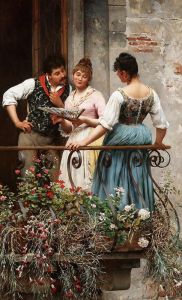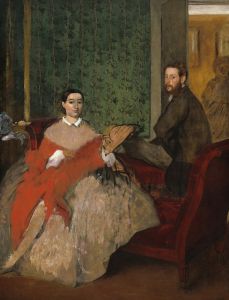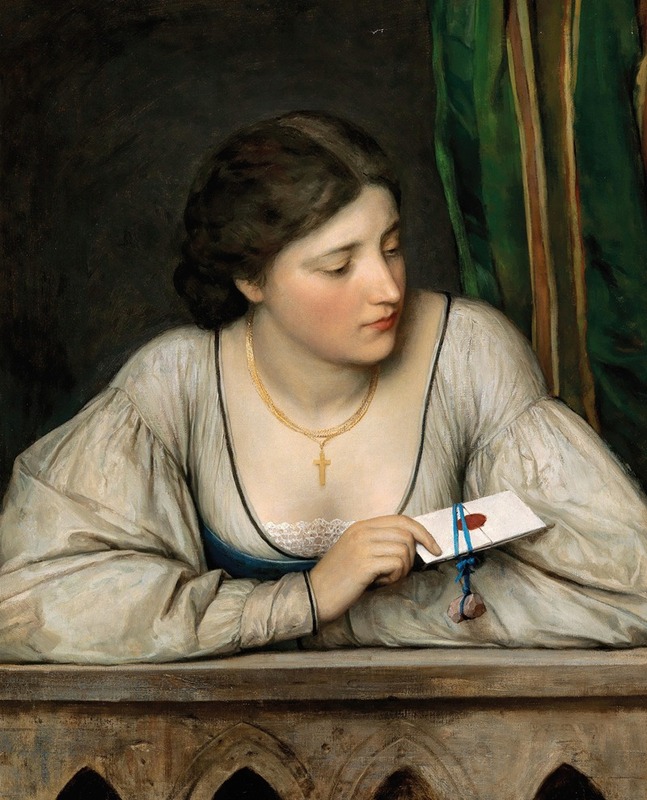
The Love Letter
A hand-painted replica of Eugen von Blaas’s masterpiece The Love Letter, meticulously crafted by professional artists to capture the true essence of the original. Each piece is created with museum-quality canvas and rare mineral pigments, carefully painted by experienced artists with delicate brushstrokes and rich, layered colors to perfectly recreate the texture of the original artwork. Unlike machine-printed reproductions, this hand-painted version brings the painting to life, infused with the artist’s emotions and skill in every stroke. Whether for personal collection or home decoration, it instantly elevates the artistic atmosphere of any space.
Eugen von Blaas, an Austrian painter known for his genre paintings, created "The Love Letter," a work that exemplifies his skill in capturing the nuances of human emotion and interaction. Born in 1843 in Albano Laziale, Italy, von Blaas was the son of Karl von Blaas, a noted history painter. Eugen von Blaas was trained in the arts from an early age, studying at the Academy of Fine Arts in Vienna and later in Venice, where he developed a keen interest in genre scenes, particularly those depicting everyday life in Venice.
"The Love Letter" is one of von Blaas's notable works, showcasing his characteristic style that combines academic precision with a warm, engaging portrayal of his subjects. The painting typically features a young woman, often depicted in a moment of contemplation or interaction, as she reads or holds a letter. This theme of receiving or reading a love letter was a popular subject in 19th-century art, as it allowed artists to explore themes of romance, anticipation, and the private emotions of their subjects.
Von Blaas's work is distinguished by its vibrant color palette and meticulous attention to detail, particularly in the rendering of textures and fabrics. His paintings often feature richly detailed backgrounds that provide context and depth to the scene, enhancing the narrative quality of the work. In "The Love Letter," the setting is likely to be an intimate interior space, which serves to focus the viewer's attention on the emotional state of the subject.
The artist's ability to convey emotion through subtle expressions and body language is evident in this painting. The subject's facial expression, posture, and the way she interacts with the letter all contribute to the narrative, inviting viewers to speculate about the contents of the letter and the nature of the relationship it represents. This focus on human emotion and interaction is a hallmark of von Blaas's work and contributes to its enduring appeal.
Eugen von Blaas enjoyed considerable success during his lifetime, with his works being exhibited widely across Europe. His paintings were particularly popular in England and the United States, where they were sought after by collectors who appreciated his technical skill and the charm of his subjects. Today, von Blaas's works, including "The Love Letter," are held in various private and public collections, continuing to captivate audiences with their blend of technical mastery and emotional depth.
While specific details about the exact date of creation or the current location of "The Love Letter" may not be readily available, the painting remains an excellent example of von Blaas's contribution to genre painting. It reflects the artist's ability to capture the subtleties of human emotion and the timeless appeal of romantic themes, securing his place in the canon of 19th-century European art.





